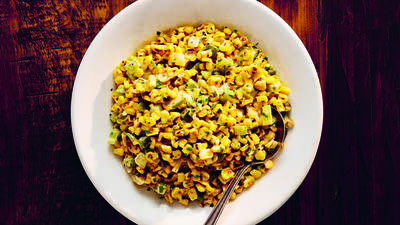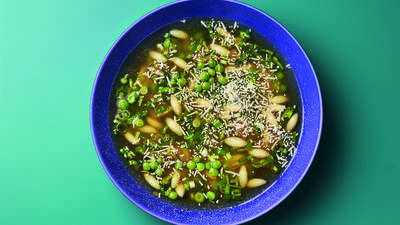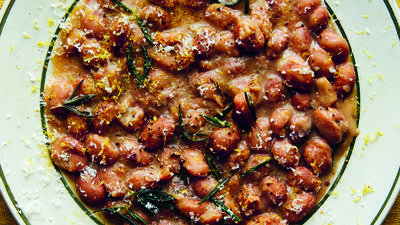
Before mustard, mayo and Miracle Whip, there was chutney. Chutney could be viewed as India's calling card to the world, along with the greatly-misunderstood curry. Few things do for a meal what a chutney can do. Chef Vikas Khanna has Michelin-starred Junoon, the film series Holy Kitchens, and hosts and judges India's MasterChef series. He explains how chutneys are made and used in India.
 Vikas Khanna
Vikas Khanna
Chutney is a very funny quotation in our homes. Every time you try to buy something in volume, when you bring it home, everyone responds the same way in India: "What are you going to do with so many apples? Are you going to make a chutney?"
On the other side, we have a great quotation: "I'm going to beat you up to make a chutney out of you." I love that chutney is such a common word in our language. It has so many different meanings.
The word "chutney" comes from the word "to lick." Some people say that "chutney" comes from when you lick it, it is so delicious and addictive.
Chutneys can be preserved with a longer shelf life or chutneys can be instant. I also consider a raita a chutney -- it's just a yogurt dip that can have any number of elements in it. But it's a yogurt dip, so we call it a yogurt chutney.
Almost everyone has to have tamarind chutney in street food or even with appetizers. It's not only sour, I think tamarind gives a very nice undertone of smokiness and sweetness. It's the simplest chutney, you can never go wrong with it. I use it as marinades, I use it as spreads, I use it in making sorbets -- it's multipurpose. I add a spoonful to curries. Lemon gives you a nice, citrusy acidity, but tamarind gives you a nice acidic flavor, sourness, sweetness and color.
In April and May we get a lot of green mangos -- every home in India makes some form of mango chutney or mango pickle. Everyone has their own variations.
 Khanna's recipe: Cilantro Chutney
Khanna's recipe: Cilantro Chutney
I think there's one chutney that connects the whole country, and that is the green chutney. It could be cilantro, mint or green chili. It could be sometimes used with dried pomegranate seeds.
My grandmother said you can't make green chutney without dried pomegranate seeds. I said there are so many different ways. When I started traveling, I said, "You can add yogurt to it, you can add sour cream to it." She said, "No you can't make it like that." Once I made a chutney with yogurt and she loved it. She said, "This tastes better than mine because the yogurt gives it that creaminess."
We never had a blender until I was maybe 17 or 18. There was a stone and everything was ground on that stone. My grandmother said if you use a blender to make chutneys, you destroy the texture. The chutneys were always coarse. Initially I never used to like them, but later when I started making all the fine chutneys, I missed the textured ones because they would give you a bite.
It just goes on the side of any appetizer, fried chicken, grilled chicken, chicken tikkas, any kind of fritters, samosas, or the most important, dumplings of any kind. India has such a variety of chutneys that even when the inhabitants who came to India after the revolution in China and Tibet sell momos, in authentic places they serve them with green chutney. I love it. It adds one more dimension of flavor and spiciness.
My nieces eat noodles and they need to have green chutney. Even with pizza they will be ordering green chutney: "Can we get some green chutney?"
Before you go...
Each week, The Splendid Table brings you stories that expand your world view, inspire you to try something new, and show how food connects us all. We rely on your generous support. For as little as $5 a month, you can have a lasting impact on The Splendid Table. And, when you donate, you’ll join a community of like-minded individuals who love good food, good conversation, and kitchen companionship. Show your love for The Splendid Table with a gift today.
Thank you for your support.
Donate today for as little as $5.00 a month. Your gift only takes a few minutes and has a lasting impact on The Splendid Table and you'll be welcomed into The Splendid Table Co-op.




